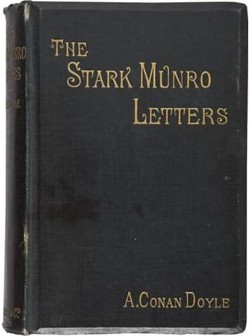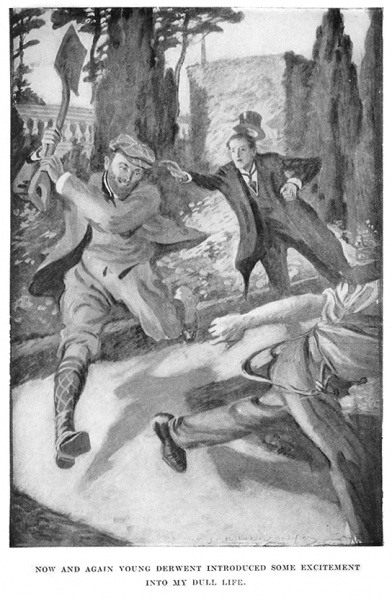View the full PDF or contine reading for the overview.
THE STARK MUNRO LETTERS: A DETECTIVE'S PERSONAL INQUIRY
The Stark Munro Letters is a novel by British author Sir Arthur Conan Doyle first published in 1895 by Longmans, Green & Co. in London, England. As a novel it takes the form of twelve long letters written by J. Stark Munro between March 1881 and November 1884 and sent to his friend Herbert Swanborough of Lowell, Massachusetts, USA. Stark Munro is a recent graduate from medical school, and the letters detail his attempts to create a medical practice in partnership with the brilliant but unorthodox James Cullingworth. The novel is in fact a thinly disguised account of Doyle's experiences with George Turnavine Budd with whom he was in partnership, before finally setting up his own practice in Plymouth ['Bradfield'] in 1882.



Stark Munro Letters (Longmans & Green, London, 1895) is one of Arthur Conan Doyle’s lesser-known works – a large category including all of Doyle’s considerable output bar the Sherlock Holmes stories and the prehistoric adventure story The Lost World. The novella was first published in 1895, at a time when Conan Doyle had killed off Holmes (only to bring him back a few years later) and was consciously trying to do more “serious” work – like many very popular writers he became obsessed with being “serious.” In line with this ambition, The Stark Munro Letters is a coming-of-age story, which is as focused on expression of the intellectual development of the title character and his narrative actions. Stark Munro is an obviously autobiographical character – he is a newly qualified small-town doctor struggling to make ends meet, just as Doyle was in the early 1880s (the time in which the book is set). There is a conscious plot external to Munro’s own thoughts, mostly concerned with fellow doctor James Cullingworth, based on Conan Doyle’s onetime friend George Budd (with whom Doyle shared a humble medical surgery in Plymouth, England). However, Cullingworth is described as a man of great charisma and energy, but also selfish, unreliable, and even somewhat vindictive. He seems to be another reflection by Conan Doyle on the principle of sharing his divinity and therefore demonstrating the upheld truth, though a more ambivalent one than Holmes. Though Cullingworth is a Hero in the sense of being a man of many great talents, he turns out not to have the moral fibre integral to his Hero status. However, Cullingworth himself illustrates a theory of the “properly balanced man” that is reminiscent of a traditional 'visionary' Hero. Cullingworth considers himself, as well as a doctor, a novelist and an inventor, and is convinced of his own mastery of all these fields. Doyle subverts theory by putting it in the mouth of the unreliable Cullingworth, and by Munro’s judgement that Cullingworth’s novel is actually of inferior quality, and his inventions lacking in practical utility. Elsewhere in the novel, Munro reflects on Genius, and considers that genius is the “transcendental capacity of taking the trouble, first of all.” Some say that genius is an infinite capacity for taking the pains through due diligence; however, this is considered a very bad definition, but it does apply to detective work.” (e.g. Holmes' eccentric behaviour and natural deduction could be interpreted as genius) Holmes is clearly acting as a mouthpiece for Conan Doyle here, as is Munro later. Conan Doyle did not believe genius was clearly about effort. Instead, he is interested in 'greatness' as an intrinsic trait, as in truth "taking the trouble." Considering both Holmes and Cullingworth as heroes, it appears that intrinsic talent and work tend to go together, anyway. It seems, according to Conan Doyle, the Hero unites natural talent with moral fibre; the said moral fibre will compel him to work.


This work is licensed under a Creative Commons Attribution-NonCommercial-NoDerivatives 4.0 International License.
Related
Comments
Comments are disabled for this post.

 to add an item to your Itinerary basket.
to add an item to your Itinerary basket.





